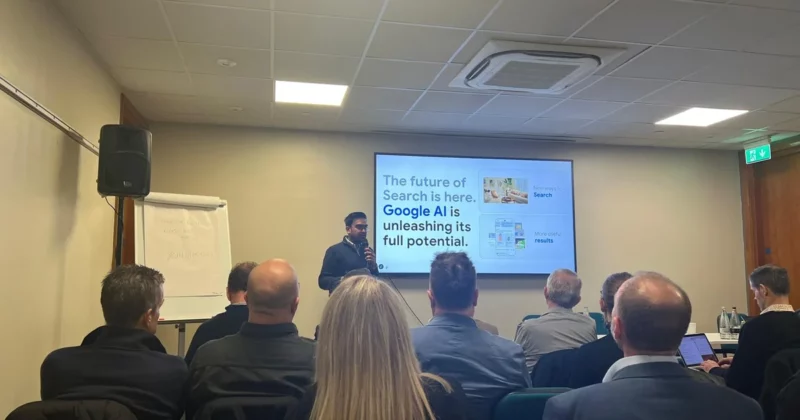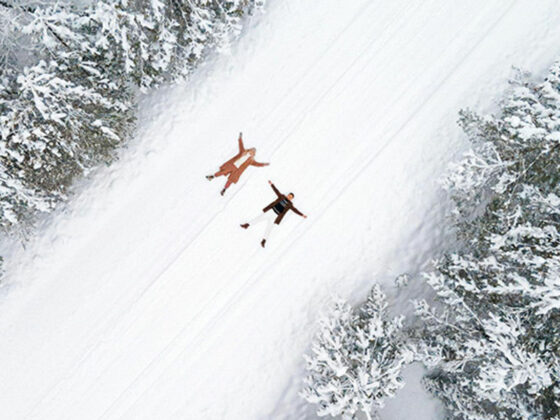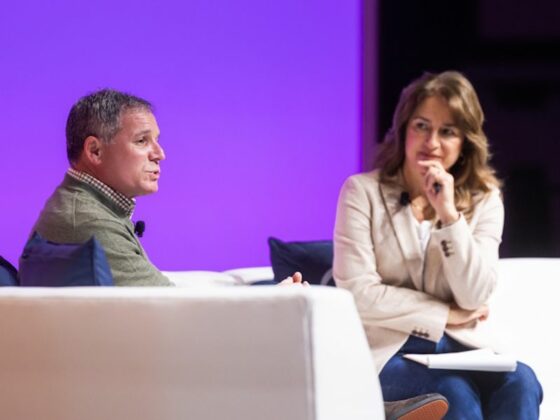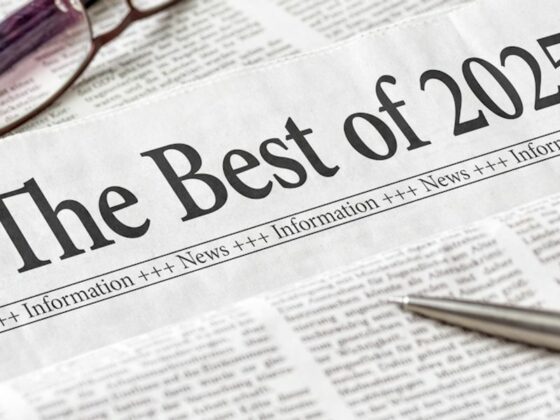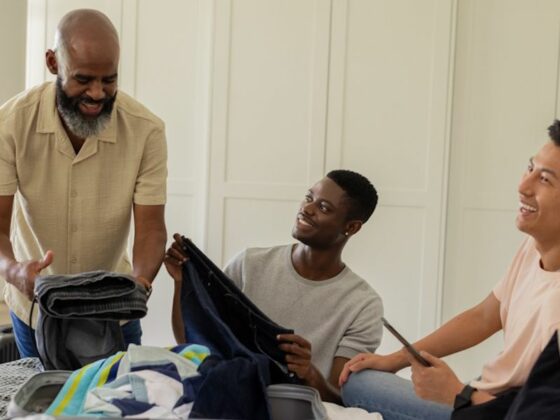Contributors

Zach Stovall
Senior Creative Strategist, Flip.to
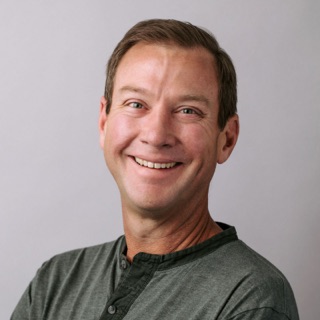
Scott van Hartesvelt
Founder, GCommerce
Transcript
0:00
Introduction
Zach Stovall: I’m Zach Stovall, host of the Thought Starters podcast on Shape.travel. Thanks for listening in. Today’s guest is a longtime digital marketer in the hospitality space, on a never-ending hunt for new technology that will enhance marketing strategy and drive revenue for his clients. His insights have shaped how the hospitality industry approaches marketing, in large part through the agency he founded 22 years ago—GCommerce.
GCommerce is the preeminent digital marketing agency serving luxury and independent hotels. His agency and team have consistently set the standard for premium performance, and have worked with some of the most recognizable and iconic properties in the world. We welcome Scott van Hartesvelt to the show. Thanks for being here, Scott.
Scott van Hartesvelt: So nice to be here, Zach. Thanks for having me.
0:51
Storytelling eyes its time in the spotlight
Zach: As a travel and hospitality photographer, storytelling has kind of always been a huge part of my career, because we know people connect with good stories and good storytelling ignites passion in people, especially travelers. And storytelling is a great cornerstone on which to build your marketing platform. But somehow the industry has strayed away from that. Tell us why that is.
Scott: Which is wild, right? Of all the things for us to stray away from is storytelling and travel, because we don’t have any stories to tell.
Zach: None whatsoever.
Scott: So I’m going to tell on us for a little bit, as marketers. I’m a digital marketer and an entrepreneur and have been in this for a really long time. So I’ll tell this in the form of a story. If you look at the arc of marketing over the last—call it 30 years, 40 years. Flashback a long time ago—pre-digital—and as marketers, our best opportunity to get in front of customers was to take out big ads in large publications like Condé Nast or something like that, to get in front of probably a not particularly qualified audience—maybe demographically targeted.
Maybe we knew the readership was pretty high income, but other than that, we were talking to—it was just a shotgun approach. Then all of a sudden Google comes along—right, by the way, at the same time that GCommerce comes along. So that’s how old we are.
Zach: You don’t look that old, Scott!
Scott: Not at all. Thank you. Thank you. I’ll send you the check in a bit.
So Google comes along, and all of a sudden, the thing that I think Google revolutionized for travel more than anything was audience segmentation and audience targeting. We had the ability to not take the shotgun approach, but to introduce behavioral targeting. So, if somebody searches for “Boston Hotel,” we know they’re looking for a hotel in Boston. That’s a behavioral aspect of that. Right?
And we can focus our advertising dollars—or our clients advertising dollars—directly to that person, which I think was a revolution at the time. Less dollars required, as you probably remember. Or–you’re young–you don’t remember this, but it used to cost tens of thousands of dollars to be able to even get a single placement in one of these in one of these big publications.
All of a sudden we could spend a few hundred dollars, and we can just target those individual audiences because it was cheaper, it was more effective and it was cheaper by marketing channel. So that goes for ten years, eight years, and everybody is really starting to kind of adopt that direction. And then Facebook comes along—social media. They introduce psychographic targeting, right?
So not only do we have intent-based behavioral targeting, but we kind of know more about them, and we know a little bit about who they are and the types of things that motivate them. And again, far more effective, far easier to place those to identify those audience. And again, it’s a measure cheaper than Google. It doesn’t make any sense.
“And I think marketers got lazy. We ran to [this type of] audience targeting, because it was so effective and it was costing pennies.”
Zach: It’s totally changed the game. Marketing completely changed with Google and Facebook just kind of overnight. Correct?
Scott: Overnight. And I think marketers got lazy. We—this is the telling on us part. We ran to the audience targeting, because it was so effective to be able to get in front of people and it was costing pennies. We didn’t really have to focus too much on the message. We could just kind of yell at them, right? Like the retargeting ads.
Yet everybody’s had this experience where you look at a pair of shoes and then for the next three weeks that pair of shoes follows you around the Internet everywhere you go. That was us. We were doing that, because it costs like a penny every time that pair of shoes followed you around, and eventually it was almost like you got exhausted and just bought it. “If I buy this, will you stop screaming at me?”
Zach: It will go away, finally. Most of the time, anyway. Not always.
Scott: Most of the time, if the tracking’s really good. And so that became an experience—the experience from a marketer’s perspective was screaming at people and using frequency. Frequency of advertising is a marketing principle, right? We need to reintroduce our brand over and over and over again. But there’s only so many times you can scream, “Fifteen minutes can save you 15% or more on car insurance,” in a day before people just. They get tired of it.
“But there’s only so many times you can scream, ‘Fifteen minutes can save you 15% or more on car insurance,’ in a day before people just. They get tired of it.”
So, I think what we’ve started to identify, if you kind of take a step back from that and say, “What is marketing?” Marketing is the audience, it’s the medium that you’re going to market to that audience on, and the message that you use. The pendulum shifted all the way to the audience. And I think for a number of different reasons, that pendulum is starting to switch back and to shift back towards message, right?
How are we effectively communicating to these people? In no small part because—for the first time in this whole in this whole arc of history of digital history,—it’s getting harder to reach people.
Zach: Yeah. And that’s third-party data kind of going away. People getting smarter about their personal information and sharing it too broadly. So, things are certainly shifting for the Google’s and the Facebooks of the world and for digital marketers as well.
Scott: I think that’s exactly right. I think that’s exactly right. And so storytelling is becoming all that more important. And, you know, well. You’re a hospitality photographer by trade. That was how you came up is in travel and hospitality photo photojournalism photo editing?
Zach: That’s my passion you know and yeah so you know, storytelling has always been a huge part of that. It’s not about me or what I think needs to be shown. It’s about the audience, and what the audience wants. And I think that’s an important perspective that I’ve always tried to have coming from that journalistic side.
Scott: And it makes sense, right? Like if you if you take it away from the digital marketing space and like a paid search ad or display ad, and you start to think of this from the perspective of travel journalism and travel photography, of course, we want to put the guests there, right? We want to kind of think of things from their perspective. How are they going to experience this place, and do so in a really interesting way?
6:53
Selling time vs. selling a bed
Zach: Exactly. Because they’re the ones that are choosing to travel to this destination. They’re the ones that want to have an experience. And I mean, of course, everyone travels for different reasons, but you know, when someone chooses a place, they’re going there for a reason. And if you can be at the center of that reason and you’re not saying, hey, look, come stay in our beds buy this bed, buy this pillow, that’s not what they want.
Yes, of course, they need a nice, comfortable bed. They need a comfortable pillow. But they’re going there for the experience. So when I was at the magazines, we were always editorially focused. And, you know, even if it meant kind of bucking what the tourism board said or, you know, maybe creating a little grift with the PR person at the hotel, it was because we were doing it for the reader, and we wanted to tell the story of that destination. Not so much the PR spin.
“‘Here’s our thing. Buy it?’ It’s our bed and breakfast package. No really, buy it. Maybe if I make the font bigger, you’ll buy it. Maybe if I make a picture of the eggs a little bit more dynamic, you’ll buy it right?”
Scott: It works, right? I mean, that’s what drove readership.
Zach: Absolutely. I mean, we had a very loyal following of readers, and it was because we looked out for them.
Scott: So why don’t we do that in digital marketing? Why do we take the perspective of, “Here’s our thing. Buy it?” It’s our bed and breakfast package. No really, buy it. Maybe if I make the font bigger, you’ll buy it. Maybe if I make a picture of the eggs a little bit more dynamic, you’ll buy it right?
Zach: Let’s saturate the colors a little bit more.
Scott: Let’s saturate the colors. I always talk to my team when they go to see clients, and I say, pay attention to the stuff you say when you go home because it really matters. Your brain filters through stories, right? And so our guests are looking for those stories, too. I say to our team, I promise you, you’re not going to go home and talk to your to your loved ones about the 400 thread count sheets.
“I promise you, you’re not going to go home and talk to your loved ones about the 400 thread count sheets.”
You’re just not going to do it. You’re going to talk about the people and the experience and the way that you were able to engage with this space and with this place in new ways that it potentially was transformative for you. That’s the perspective that we have to take for our guests.
We just signed, and I’m really excited to be working with these guys. They’re called Bartell Hotels. They’re almost exclusively located in the San Diego area. That’s where the property is located. One of their properties is the Dana on Mission Bay, which—so I’m touring the property with the general manager, and the amazing team there. And Zach—the piece of real estate that they’re on. It’s like iconic. It’s world class. It’s like on the point in the bay. You couldn’t have a better spot. And so the obvious thing to do here is to kind of look at that and say “this is easy.” Like we just have to just show the location, right? Like that’s the thing, right?
But there’s more that we can do with it. So I start talking to the general manager, and he’s talking about the history of Mission Bay. He says, this is a manmade bay. And it’s almost like a planned community, before that was a big thing. So in the 1940’s and the 1950’s they kind of established what this place was going to look like. And then they allowed for five resorts to be built, on Mission Bay. And then they closed the door.
And nothing’s been built since. And so the Dana on Mission Bay is one of those five. It is not this resort that is sitting on the outside of Mission Bay and providing guests access into it. It is Mission Bay. It’s integral to the experience. It’s essential to what the story of this place is. Tell that, and you’re going to win guests. Those guests are going to go home, and that’s the story that they’re going to… they’re going to say the location was incredible, and it’s iconic. And let me tell you the story of how it got here and why it got here.
Zach: And they feel like an expert on the subject when they get home, too, because they had this story to tell and they know the details and they can wow their friends with all of this new knowledge that they gained by traveling somewhere and trying something new.
Scott: That’s exactly right.
Zach: If you just if you go stay at whatever chain property, there’s not that story to tell. Yeah, you can tell about Mission Bay, but the place that you stayed isn’t really part of that story.
10:47
Narrative outperforms transactional, every time
Scott: It isn’t that essential component, right? It isn’t a player in the actual story. By the way, this works, and we know definitively this works. We are still a data driven organization and a data driven agency. And so we’ve done some case studies and we’ve looked throughout our portfolio. We run transactional-based messaging, and we run narrative arc-based messaging.
The narrative stuff performs 30% better—30% better! That’s not like a 2% or 3%. It’s not within the margin of error, right? Thirty percent. Thirty percent!
Zach: That’s enormous. I’m actually really surprised to hear that. But I’m not surprised to hear that. What I’m surprised about is the data point, because working on the editorial side with travel magazines, we always knew that there was something to storytelling. There was a reason that we looked out for our readers. There was a reason that we went to a destination and said, “Let’s find the soul of this place. Let’s figure out what makes this place tick. Let’s talk to the people that live here. Let’s talk to the people that own businesses here, and find out why they own a business here, why they want people to come and see them. What guests really experience when they’re there—not the like Banana Boat tour or whatever. But what would a guest do, and what are the things that they go home and talk about? And what do they come back to the hotel and tell the general manager, “Hey, we did this today and it was so cool. We loved it.” You know? That is the essence of a destination, and that is the essence of this story. And it’s so great to hear you put numbers behind it, because we knew that resonated with readers. We just never really had a data point to show that it did.
“I don’t know another hospitality digital agency that spends a tremendous amount of time and intention training our team on storytelling. And we do”
Scott: And thank God, right? As an agency, this is something that we really believe in, and that we’ve actually—I don’t know another hospitality digital agency that spends a tremendous amount of time and intention training our team on storytelling. And we do. We talk about the components of storytelling. We talk about how that can happen visually and how that can happen through copy, and through content and what that narrative arc looks like.
And we train the brain science behind it—oxytocin and dopamine and the types of hormones that are released as a human being absorbs the story as you make them laugh. And those endorphins come like, what does that do for them in terms of their mood towards buying and their mood towards kind of having some type of brand affinity or affinity to that—the person who’s telling the story. And at the heart of all of this—so I preach the gospel of Michael Porter. And if you’re one of the five people out here who know who he is, reach out to me. You’re like my spirit animal. We can talk about Michael Porter and geek out about all old-school marketing stuff for as long as you like.
“Now we buy into this idea of telling stories and telling stories digitally. What are the things that we need to make sure that we touch on?”
But he wrote a book called Competitive Advantage in the late seventies, early eighties. I think it was like 80 or 81. And it’s always been the foundational component of GCommerce. It’s what we’ve—it’s never changed. It’s what we’ve always built around is the idea that an advantaged brand has long-term sustainable competitive advantages. The things that become that identity; that become the tentpoles of their story. So that to transition into, okay, now we buy into this idea of telling stories and telling stories digitally and taking people through this arc, what are the things that we need to make sure that we touch on? And that’s the stuff. That’s the stuff that we built the stories around. And so through that process—and this is an old process. This is branding, right? Through that process, we build equity in that brand and we build affinity for that brand.
Zach: What you were saying about the oxytocin and the hormonal things that people experience through travel, I think that’s real. I mean, when I travel places and I experience something new, it makes me want to travel more. And I think other travelers have that as well. Like you go someplace new and you want to go to ten more places because it’s that dopamine hit of seeing this new place with your own eyes, learning about it and going home and telling people what you did. So I think that’s foundational to travel.
“I know hospitality professionals are some of the hardest working people on the planet. Sixty-hour weeks—nobody’s a stranger to those.”
Scott: I think so, too. And it’s scientific. I mean, we know this, right? Dopamine. When you get that dopamine hit, you become more alert, you become more open, you become more kind of neutral to the things that you’re seeing. So you start to—it’s like your senses are further engaged. I think about the attractiveness of that in travel. I mean, this is transformational for a lot of people. People—we can’t lose the romance of what we do. We really can’t. And I know it’s hard. I know hospitality professionals are some of the hardest working people on the planet. Sixty-hour weeks—nobody’s a stranger to those, right? They’re normal.
But there’s a romance to what we do. We are providing these transformational experiences to people on the leisure side. Oftentimes, you know, there’s one vacation a year, and it’s the family vacation. You know, the old adage—it’s like, do you remember what you got for Christmas when you were 12? You probably don’t. Where you went on vacation? I bet you do. Right? These are the things that become the building blocks and the foundation of the family. So I think we have a responsibility to them.
Zach: Like you were saying, just that Christmas experience. You know, like you just you remember these things as a kid. Like, I remember going to Acapulco as a kid and there is some, you know, other kid that was my age that was a local that walked up and he was selling necklaces. And he ended up playing with me for the rest of the day. We were like boogie boarding in the waves. And he totally wasn’t selling his shell necklaces that he came to sell. And I remember that kid and I don’t know, I must have been like eight years old, but that was a transformational experience. I got to meet someone new. I got to kind of learn about things from their perspective on where they live. It was just—it was transformational.
Scott: I think that’s a great story, Zach, and I think that if we were to just to build on that for a second—and this is the type of thing that I think can maybe help the audience in thinking through how to find a story—and how like, this is overwhelming. I don’t know. I don’t even know where to start with this. That’s a great example because that’s emotional and it connects. And really, I think if you were to put yourself in the traveler’s mind, it kind of goes back to this old adage of talking about features versus talking about benefits. The feature is the creature comfort stuff. But the benefit to a family is that young Zach had this kind of eye-opening experience, right? He was in a place that was friendly; was in a place where it was integrated with the community—where he got that access. And as a result of that, you had this thing that you’re—that a mere eighteen years later…[laughter] You’re welcome!
Zach: More like 30. Thank you.
Scott: A mere 18 years later.
Zach: It was 30 plus.
Scott: Is still something that you talk about, right? I think that’s the way that you know, it’s a great example of ways that we can start to dig and start to mine for the stuff.
17:35
Rethinking the marketing funnel
Zach: You mentioned that there’s this 30% bump from storytelling. So let’s get into the marketing funnel, and how does this all play into the marketing funnel, especially that traditional marketing funnel that we have all come to know—and somewhat love?
Scott: Yeah, I mean, we’ve certainly accepted it, right? Like, I think it’s pretty ubiquitous. Through the power of editing I know that you’re going to kind of put this on the screen later, but we see this thing that we should all be familiar with that says awareness, consideration, preference, intent, and then purchase is at the bottom of that funnel.
And so as marketers, what do we do? I mean, it’s kind of a—it’s almost a trite playbook. We fill the top of the funnel with awareness, with, you know, market-based campaigns and big prospecting campaigns. And then in consideration and preference where we’re, you know, maybe hitting them with some retargeting, we’re using social media, we’re starting to build a little bit more of that story. And then in intent and in purchase, maybe we’re using metasearch as a way to convert that, or buy direct and save—whatever those messages are. But I would just challenge us to think about this for a second. First off, again, the audience is cheap or used to be, and so filling the top of that awareness funnel was really easy, right?
“Why in the world is the bottom of the funnel a purchase? And why are we treating all purchases the same?”
But some of that stuff is going away. But here’s the bigger thing to me. Why in the world is the bottom of the funnel a purchase? And why are we treating all purchases the same? That doesn’t doesn’t—that’s not how people run their hotels, right?
Zach: I would imagine that [The Dana on] Mission Bay has guests that have been coming back year after year for 20, 30 years. Maybe more.
Scott: And they’re generational maybe. Or maybe they come more frequently. Or maybe they always stay in a suite or maybe they’re a higher value for some form or in some form or fashion. But the 150-room hotel general manager—he knows or she knows who that guest is. Knows him by name, greets them by name. Right? And yet in our world, everything’s just a conversion.
Everything’s just a return on ad spend. Right? Like it costs me 30 bucks to get this person here, and they spend $300. It’s a 10 to 1. Math is my strong suit! It’s a 10 to 1 return. Right? But that’s—it just—in my opinion, it devalues the opportunity that we have and the opportunity to infuse storytelling. And so we’ve kind of created a different way to think about this, where you do the top of the funnel is still awareness because you still have to find new guests. You always have to be kind of filling that funnel. And then there’s the initial conversion. But then let’s think about this a little bit more proactively and a little bit longer term.
“The time that people are absolutely the happiest in their vacation is after they’ve booked and before they’ve stayed. Because their imagination has run wild. What are we doing to engage people at that time?”
There’s house conversion excitement before they come and stay. My business partner, Chris Jackson, likes to quote this all the time. The time that people are absolutely the happiest in their vacation is after they’ve booked and before they’ve stayed. Because their imagination has run wild. Right? What are we doing to engage people at that time? What are we doing to take advantage of that post-stay engagement? They’ve just stayed. Are we doing something other than, you know, a be back campaign, you know, 30 days later, come stay again? Are we doing anything beyond that? And then, to us, this is where things get really, really good—is these repeat conversions, brand loyalty. And then the bottom of our funnel is lifetime advocacy. So it’s not just brand insistence. It’s the idea that these are people who are out there.
They’re not just saying, “If I’m coming to your market; if I’m coming to Mission Bay, I’m only staying at The Dana. And if The Dana isn’t available, I’m not coming to Mission Bay.” That’s brand loyalty. That’s brand insistence.
Lifetime advocacy is taking that even one step further, and saying if I know anyone who is traveling looking for that type of vacation or looking for that experience, I’m going to go out of my way to tell them about my experience at The Dana.
That’s really powerful. I think marketing has a role to play through all of this, but we spend—if you go back—I would challenge anybody, go back and look at your marketing spend. You all have marketing budgets for 2024, right? And then think about it in the in the form of these funnels. What percentage of your budget are you spending on the top, and what percentage of your budget are you spending on the bottom?
I would venture to guess that for most hotels, most of your budget is spent on that awareness and maybe in that consideration phase. Right? Where I think that we can generate so much more value is if we kind of move down into that.
21:54
What is the lifetime value of a guest?
Zach: Walmart values their average shopper at $250,000 over their lifetime. And I mean, I don’t know what Amazon’s statistic on that is, but I’m sure they know it. So why in the hotel industry are we not taking that same approach, especially for a Mission Bay? You know, they know all of those guests that come back year after year after year, and they bring their children. Their children bring their children. And, you know, that’s lifetime value. And I think if more hotels and resorts put effort into kind of cultivating that and encouraging that they’d be successful.
Scott: And tracking it all. I think that one of the, you know—What’s the advantage of this with the degradation of third party data, first party data becomes all that more important. Right? Like the more that we can actually cultivate an audience, the more effective that we can be at retargeting campaigns, the more effective we can be at refilling the top of the funnel.
I mean, all the things get better the bigger your first party audiences, and the quality of that first party audience matters. So you say lifetime value. That’s right. That’s exactly right. And that’s what most businesses in other verticals look at is the lifetime value of the customer. We don’t. If there was a way to track—and I think that there’s been some—I know there’s been some technological limitations to being able to do that. But I think that those limitations are—those barriers are being broken down as we speak. And that will become far more available to us to where we take—we devalue necessarily—not completely, but we de-emphasize the focus on the single conversion price.
And instead we say, okay, “This is Zach. Zach’s going to stay here. We know Zach stays here once a month. He stays for three days. He stays in a suite. And so, if we project that even over the course of a year or three years or five years, Zach is worth X amount of dollars. And guess what? Now go back to your marketing agency and say, here is your profile.
We want more Zach’s! Like that is how you build an advantage for a hotel where on a STAR report you’re running a 110, 115 RevPar Index, and none of your competition knows why. They’re looking at you going, “But you run it in the same display ads.” It’s like yeah, you don’t you don’t understand. It is that community—it’s going to sustain your hotel for the long-term.
Zach: I get where the industry’s coming from. Travelers, we’re a transient group. Right? The systems aren’t quite there yet, but I guarantee you, if people put their minds to it, we’ll find a way.
Scott: I think we can. I think we can. There was a—this was before its time. I’ll tell you another story, because we’re this is a storytelling podcast. We got engaged by Dollywood to open the DreamMore Resort. And unlike most of the time where we are engaged to open a resort that is not yet open—that is in construction—we were hired 18 months early.
Which is wild. And so it presented a completely different problem set for us. Which was, their task for us was to open the property well. To open it strong. And for those of you who have opened a property before, that doesn’t often happen. Usually there’s a soft opening period and there’s kind of a ramp-up for over a year before you get to kind of normalization.
And they said, “Is there a way to hack that? Is there a way for us to jump in front of that?” We said, “Well, we’ll see what we can do.” So we kind of put on—we kind of were—as a result of that, allowed to break our own rules and to really think creatively about this. The easy answer was, well, Dolly Parton was associated with this place.
There is no one with a higher IQ Score, I am now convinced, than Dolly Parton. People love that woman, and for good reason. I mean, she—talk about professional branding. I mean, she really knows who she is, and it’s authentic and it’s genuine. And so for us, we understood how passionate people were about that. And we knew that there was this community out there. And so we said, “Why don’t we build a community that helps us open this property?” Kind of a different way to look at it. So we branded this thing called the “DreamMore Founders Club,” and we did a few things. We made it scarce, so we only allowed 30,000 people. And think about that—opening with 30,000 people. Right?
Loyal raving fans. We said there’s only 30,000 people who are going to be in and we gave it benefits. We said, you know, you’ll get 10% off bar, and you’ll get it for the rest of your life and it’s inheritable. You can put it in your frickin will, and send it to other people if you want. Right? You can give it to your friends.
You could do whatever you want. But really, the more important thing is we’re going to ask—once we have you kind of engaged in this—we’re going to ask you questions, because of your fandom. And we’re going to have you help us think about great ways to open this resort and program this resort and build this resort.
It sold out. In two weeks!
In two weeks you had 30,000 people. This is like nine, ten years ago. I mean, we were just absolutely flooded. So we started to do that. So the restaurant was trying to find a way to make the restaurant Dolly Parton centric and to really make it authentically connect. And we put like our brand story out there.
We put our brand book. We said, “Here’s the way that we’re thinking about the components of our stories, and all this, and this community. This Founders Club was just eating it up and eating it up. And so we said, “Does anybody have an idea? And this one person came back and said, What about Dolly’s hot stone soup story?”
So we look it up. We have no idea, and we look it up. And she has this story from when she was a kid. She grew up in a family with really meager means, and that’s part of her story. And so her mom—who was a genius, an absolute genius—would have like vegetable broth for dinner, and that’s all that they could serve.
“If you really think about the power of co-creation and community and this kind of long term focus on your guest, it can do really transformational things for a property.”
And so she would send the kids out into the garden to select their own perfect special rock. And they would come back in and she would go through a ritual of cleaning the rock and polishing the rock, and then she would place that in the soup for each of the kids. And so they had hot stone soup, and it made it special. It made it theatrical.
We put it in the restaurant. Think about that experience for a guest. We had a rock garden for the kids to be able to go out—when we were serving vegetable soup. They would go out and they’d be able to pull that. And that came from this amazing community. So I think that there is—if you really think about the power of co-creation and community and this kind of long term focus on your guest, it can do really transformational things for a property.
Zach: I completely agree. Some of the more memorable experiences I’ve had at properties are ones where they’ve tied in something to their surroundings, like you can get something that’s available. I mean, you know, the simple story is something that’s grown locally, but, you know, anytime you can tie it into something that’s surrounding and part of the history or lore of the destination is huge.

Tropical views of Saint Lucia’s two Pitons peaks – Gros Piton and Petit Piton (Photo: Zach Stovall)
There’s a resort in Saint Lucia called—it’s called Rabot Estate, now. It used to be called Hotel Chocolate. And I think back in 1745, it was cacao plantation. And so they grew cocoa there. Cocoa pods. And at some point in the history of Saint Lucia, the cocoa trade died and they stopped growing cocao completely. But this beautiful estate stayed kind of in use, or at least the building remained there.
There was something of the property. People lived there. And the crazy thing is this estate is right in the middle of the two Pitons—Gros Piton and Petite Piton. I don’t know if you’re familiar with Saint Lucia. They are these beautiful, iconic volcanic structures. They’re twin peaks, basically, that stick out of the ocean, and it’s all part of a large volcanic system.
Well, this estate sits right in between the two of them. And so. So hotel chocolate is a major chocolate manufacturer in the UK. And they came in and they found this property and they bought it and they basically revived chocolate production in Saint Lucia. So they brought in the technology and the means by which to propagate new cacao plants, and they taught the farmers locally how to grow them to their standards.
And then they, they agreed to buy all of the product that all of the farmers grew. And that became kind of a bean to bar scenario. So not only that, they decided that they were going to put a resort there on this estate, and so they made a small—I think it might be, you know, ten or twenty rooms or something like that, all little individual villas.
And in front of it they put a restaurant. That restaurant serves only things made with chocolate. So everything in the restaurant—every appetizer, every entree, every dessert has chocolate or cacao in it somehow—and drinks at the bar as well. They really found a way to tie in this heritage of the estate and something that was critical to Saint Lucia at some point.
And they’re making money off of it. They’re using it as a more sustainable way to grow chocolate and make this bean to bar thing. And they’re also treating guests to this immersive experience that they would never be able to get elsewhere.
“Everything they say it’s going to be like they’re reading from your brand script.”
Scott: I mean, just the stories that come out of that from a guest perspective. You can just imagine every single person who goes and stays there goes home—it’s like it’s a marketer’s and brander’s dream, right? Because everything they’re going to say is so on brand, everything they say is going to be is like they’re reading from your brand script. But that’s really good. That’s so good.
Zach: It’s fantastic. It’s one of my favorite stories in the Caribbean. Of course there are a ton of them, but it’s a unique experience. And right there on a property you can do a bean to bar kind of experience. So you take the beans that they grow right there and then you make it into chocolate yourself as part of this hour long tour, you get to tour the grounds and then make chocolate yourself and then eat it right there. And you have a view of the Pitons the entire time.
Scott: Yeah, that’s amazing. Now I want to go. My wife wants to go, too. She is. She is very much a chocolate lover.
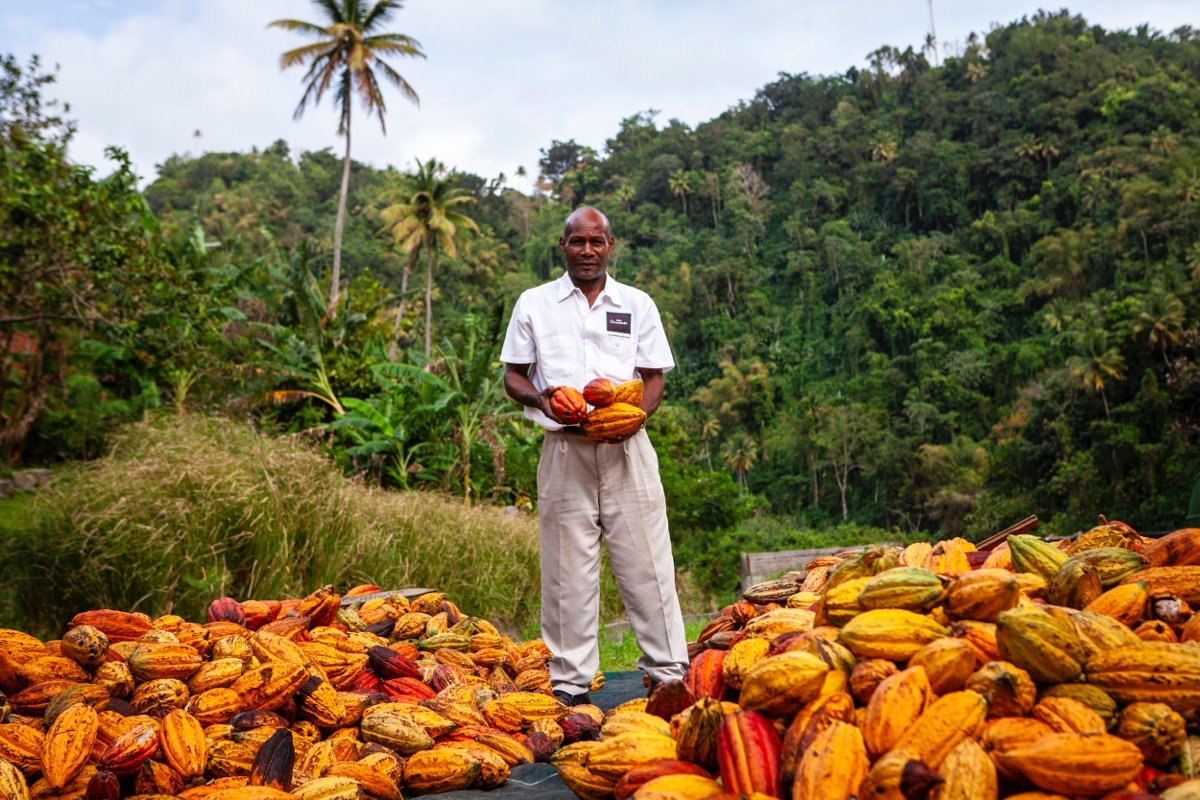
A local cacao farmer standing in front of his cacao pod harvest at the former Hotel Chocolate in Saint Lucia. (Photo: Zach Stovall)
32:07
The role of artificial intelligence in storytelling
Zach: Well, I can give you the lowdown. Tell you all the great parts about it. Okay. So we’re talking about the lifetime value of a guest, and what that means to a property. So how do we take that now moving forward? Technology is changing so quickly, and A.I. is very rapidly advancing. How do we take this whole storytelling model, this lifetime value of a guest, and apply that to AI and have that supercharge our marketing?
“There’s this giant world of A.I. and machine learning, and we’re getting really good at writing lots of blogs.”
Scott: I’m so happy that you asked that question. And I think it’s very much the topic of the day. Everybody wants to talk about A.I. and I kind of laugh because it’s this emerging technology and so many of the articles are basically “How to use ChatGPT to write a blog.” Right? Okay. Like there’s nothing wrong with that. But there’s this giant world of A.I. and machine learning, and we’re getting really good at writing lots of blogs.
Zach: Regurgitating lots of blogs.
Scott: Regurgitating lots of blogs. And I have a lot of perspectives on that, by the way. There are ways to do that well, But I think that the short term opportunity is in a couple of places. First off, if you kind of think about the buzzwords of the last ten years, big data has been a huge piece of that. And I think we’ve gotten better as an industry at collecting a really rich set of data. And then we almost got fatigued, right? Like we didn’t—it was overload. We didn’t really know what to do with it. A.I. will help with that.
A.I. will help bring insights from the information that we have and make them more relevant. So I mean, the example that you give is a perfect one of being able to calculate lifetime value and then being able to project lifetime value. I mean, that’s really where you get into machine learning and into A.I.—is not kind of connecting the dots of Zach is worth a lifetime value of this.
But being able to say, okay, so this is what that curve looks like. And I have a bunch of people who are here. Can I project where they’re going to be, and then change my behavior accordingly based on where I think they’re going to fall on future funnels? I mean, that projection, that intelligence is going to be really new for us.
“A.I. and machine learning—if we look at it from the data perspective, we’re going to see a lot of innovation. We’re going to see it fast.”
And I think a lot of people are going to harness it, and harness it well, and others are going to be focused on writing, you know, a higher volume of blogs. So that’s one area is, I think, A.I. and machine learning—if we look at it from the data side, I think from a data perspective, we’re going to see a lot of innovation. We’re going to see it fast.
A lot of the barriers to developing data protection tools and data intelligence tools are being reduced such that it will be approachable for more people and more agencies. Intent—something that we’re certainly looking at and exploring. The flip side of that is on the creator side, right? The storytelling—we talk about storytelling.
Storytelling is really multimodal. You’ve got to have the ability to tell it visually. You’ve got to have the ability to tell it verbally—ChatGPT blogs. But it’s so much more than that, right? Like being able to develop video, being able to develop these assets, being able to be iterative in your storytelling process was really cost-prohibitive for a long time.
It kind of always has been. Right? You know this from your background, from your history. I think we can start see those barriers break down as well—that empowers the storyteller. What I would encourage listeners to really think about is you don’t want to turn over the components of the really effective storytelling. Production, sure. But there are some there are some places that you can go on the production side.
“Nobody’s going to tell your story like you tell it. No A.I. is anywhere close to being there yet.”
Nobody’s going to tell your story like you tell it. No A.I. is anywhere close to being there yet, right?
Zach: Don’t let ChatGPT write the story. You control the story.
Scott: No! That’s very true. So I think, you know, what we’re exploring right now is kind of making these things more approachable. The example that I like to use for people is Facebook. Right? Like Facebook has all of your photos—maybe photos between you and a friend or maybe even photos between you and a loved one.
And then every once-in-a-while it comes up with that tearjerker of a video that you didn’t expect. And it’s like, “Here’s you and Zach for the last ten years.” There’s music to it and it cuts and there’s transitions in there and there’s everything else, right?
Zach: And you go, “How did they make that just for me?”
Scott: And it’s really good, right? It’s really emotional, and it connects.
Zach: You save in to your phone.
Scott: That’s A.I. Right? That is A.I. that is being programed to develop and deliver that. That’s here for us today. Those tools are becoming commercially available to where you can say, “Here are my brand pillars, and here are the things that really matter to me and the components in my story. And here’s a bunch of images, and here’s some music that we have access to or that we have rights to. Put these things together.”
And all of a sudden you went from having really flat imagery that the user has to kind of scroll through to having something that’s a lot more dynamic. And the cost of entry for that is next to nothing.
Zach: Yeah, and maybe for those repeat guests, there’s something that builds their photos into it just for them and shows their specific moments at the resort.
Scott: I think that’s exactly right. I had this wild experience that you just told me about or that you just reminded me of. Another one of those Bartell properties—they’re experimenting with a food 3D printer. Have you ever seen one of those?
Zach: No.
Scott: And so we walked in, and they took a picture of me. I didn’t really think anything of it. Right? We went to lunch, and they had cookies with frosting, and it was like a lifelike photo of me on the cookies and the frosting. I’m going, “What is going on? This is wild.” But it’s a story.
It’s something that we end up telling. So but no. I think you’re exactly right. If you think about a lot of times we develop creative, and we develop story to be projected to the masses, you know. The audience is everyone who could potentially stay here. And what you just said is exactly perfect. Can we make that a segment of one? Can we communicate individually with every single perpetual guest or past guest that has stayed here?
I think the iterative nature of A.I. and machine learning make that possible. And sooner than you might imagine.
Zach: Yeah. Oh yeah. It’s happening fast. It’s coming at us, so we better be ready for it. You know, I’m really excited to see where this all goes. And Scott this has been an incredible conversation. We have like just gone one-for-one, and I really, really enjoyed this. I would love to do this more.
So hopefully for our listeners out there, this is not the last time that you see the two of us on this podcast. But for now, I think we have to sign off and thank Scott van Hartesvelt from GCommerce so much for all of your perspective and insight here, and hope to do this again in the future.
Scott: This has been a great way to cap off this day. So thank you very much. Appreciate it.

